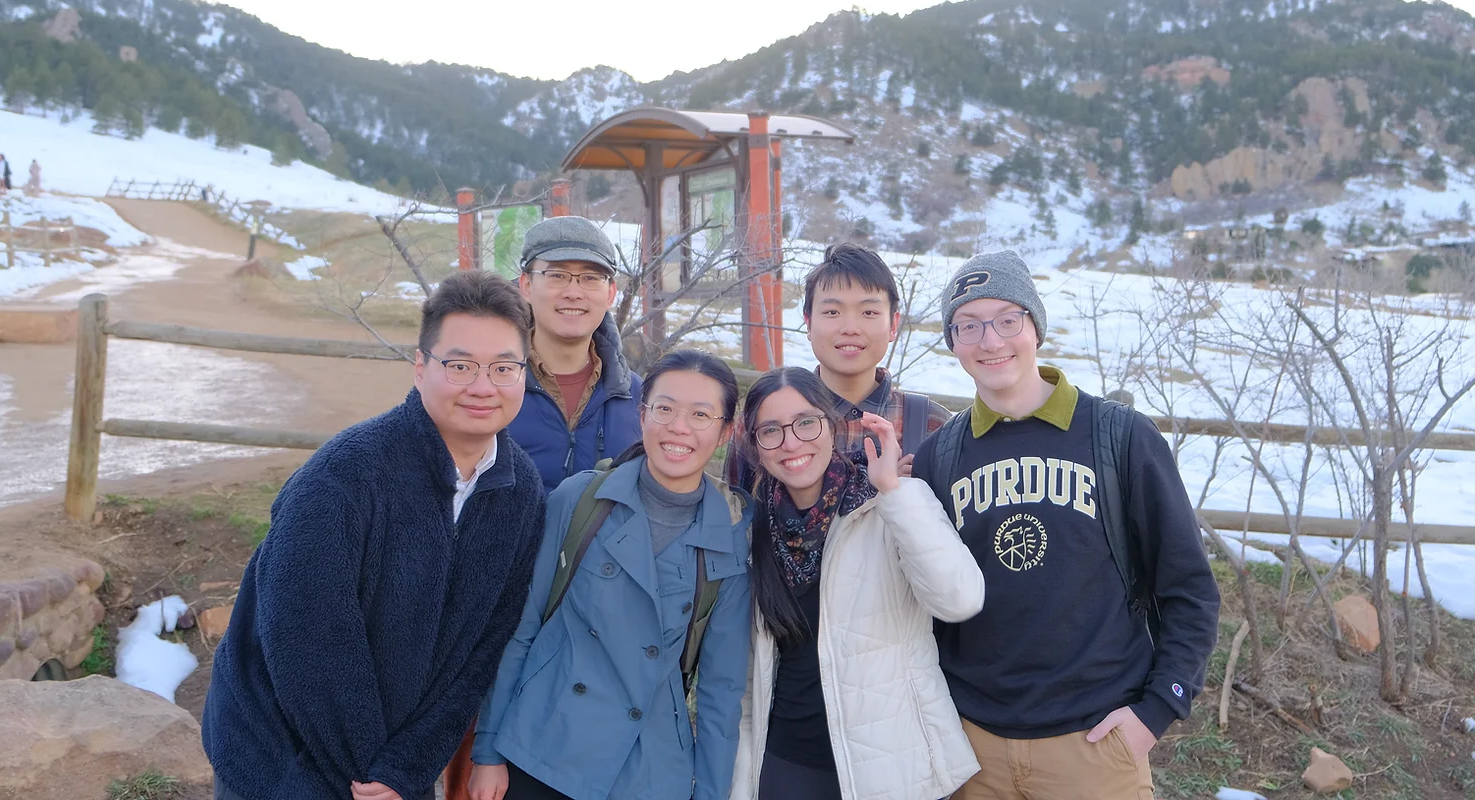Purdue researchers use traffic jam theory to explain atmospheric blocking
11-18-2024

Atmospheric blocking is an extreme weather event associated with potentially significant socio-economic losses. It can be devastating to a community when it happens and researchers would like to understand the phenomena better.
A team of researchers from Purdue University applied a traffic jam theory to explain atmospheric blocking. The team was led by Lei Wang, assistant professor with the Department of Earth, Atmospheric, and Planetary Sciences at Purdue University. They published their results in Geophysical Research Letters.
The traffic bottleneck is a new discovery to the studies on atmospheric blocking within the storm activity flux (also known as local wave activity) framework. Because scientists do not fully understand the first order dynamics of blocking events, a better means of prediction on such weather extremes is important to avoid losses.
“We stood on the shoulder of Nakamura and Huang (2018), innovatively proposing a traffic jam theory to explain atmospheric blocking,” said Wang. “The analogy of vehicle piling-up causing traffic jams was applied to the stagnation of jet streams in the atmosphere. The discovery of traffic bottlenecks in our work suggested that the narrowing-down of storm-activity-flux capacity favors blocking, analogous to a narrowing-down road capacity favors traffic jams. We also innovatively defined and quantified ‘exceedance’ events in this work, showing different thresholds of how much of the capacity being exceeded may lead to different blocking predictions. Our work provides insights on the predictability of the traffic jam theory, as well as testable mechanistic studies in idealized models. The atmospheric science community could use our work as a reference for further works on blocking predictions.”
The team was made up mostly of researchers from Purdue University’s Department of Earth, Atmospheric, and Planetary Sciences (EAPS). The lead author is an undergraduate research assistant Xingjian (Ken) Yan working in Wang’s Weather and Climate Dynamics Lab. He worked on writing coding, calculations, and plotting for the publication. Valentina Castañeda Amaya and Ka Ying Ho are both PhD students working in the same lab that worked with group velocity calculations for the publication. Additionally, Ka Ying worked with coding of the blocking index, blocking frequency and identification of blocking events.
The team also included Edwin P. Gerber, professor at New York University’s Courant Institute of Mathematical Sciences. He worked with writings as well as co-advising Yan with guidance and feedback. He also assigned additional experiments to add into the manuscript.
As an undergraduate student, Yan realizes that being a first author on a scholarly publication is a great responsibility.
“It’s such an honor for me, and I really appreciate this precious opportunity that Lei has put confidence in me,” said Yan. “Definitely, the realization of the project was challenging, and all the calculations and verifications of calculations were extremely time and effort consuming. Shout out to the Purdue HPC - it’s the best HPC I’ve used so far, and the computation resources are unparalleled. The publication started as a follow-up project that I’ve worked on with Lei in the 2023 summer. (So, my fellow Purdue undergrads - seize the opportunities of SURF!) We decided to extend the work to the calculation of the story-activity flux capacity for boreal winters, so as to examine if the traffic jam theory proposed by Nakamura and Huang is predicative. The spatial pattern of traffic bottleneck came up as we did composite analyses on the calculations, and further ideas were developed throughout the weekly meeting with Lei and Ed, as well as via conference communications (AGU 2023, and blocking workshop at US CLIVAR 2024). It was really through collective insights from many scientists and great guidance from Lei and Ed that had made the publication happen. I just followed the advice that I’ve received, had good communications with Lei and Ed, and got things done.”
The team acknowledges support from Wang's faculty start‐up fund, support from US NSF award 2411732 and support from US NSF award OAC‐2004572.
About the Department of Earth, Atmospheric, and Planetary Sciences at Purdue University
The Department of Earth, Atmospheric, and Planetary Sciences (EAPS) combines four of Purdue’s most interdisciplinary programs: Geology and Geophysics, Environmental Sciences, Atmospheric Sciences, and Planetary Sciences. EAPS conducts world-class research; educates undergraduate and graduate students; and provides our college, university, state and country with the information necessary to understand the world and universe around us. Our research is globally recognized; our students are highly valued by graduate schools and employers; and our alumni continue to make significant contributions in academia, industry, and federal and state government.
About Purdue University
Purdue University is a public research institution demonstrating excellence at scale. Ranked among top 10 public universities and with two colleges in the top four in the United States, Purdue discovers and disseminates knowledge with a quality and at a scale second to none. More than 105,000 students study at Purdue across modalities and locations, including nearly 50,000 in person on the West Lafayette campus. Committed to affordability and accessibility, Purdue’s main campus has frozen tuition 13 years in a row. See how Purdue never stops in the persistent pursuit of the next giant leap — including its first comprehensive urban campus in Indianapolis, the Mitch Daniels School of Business, Purdue Computes and the One Health initiative — at Purdue's Strategic Initiatives.
Contributors:
Lei Wang, assistant professor with the Department of Earth, Atmospheric, and Planetary Sciences at Purdue University
Xingjian (Ken) Yan, undergraduate research assistant with the Department of Earth, Atmospheric, and Planetary Sciences at Purdue University
Written by Cheryl Pierce, lead marketing and public relations specialist for the Purdue University College of Science